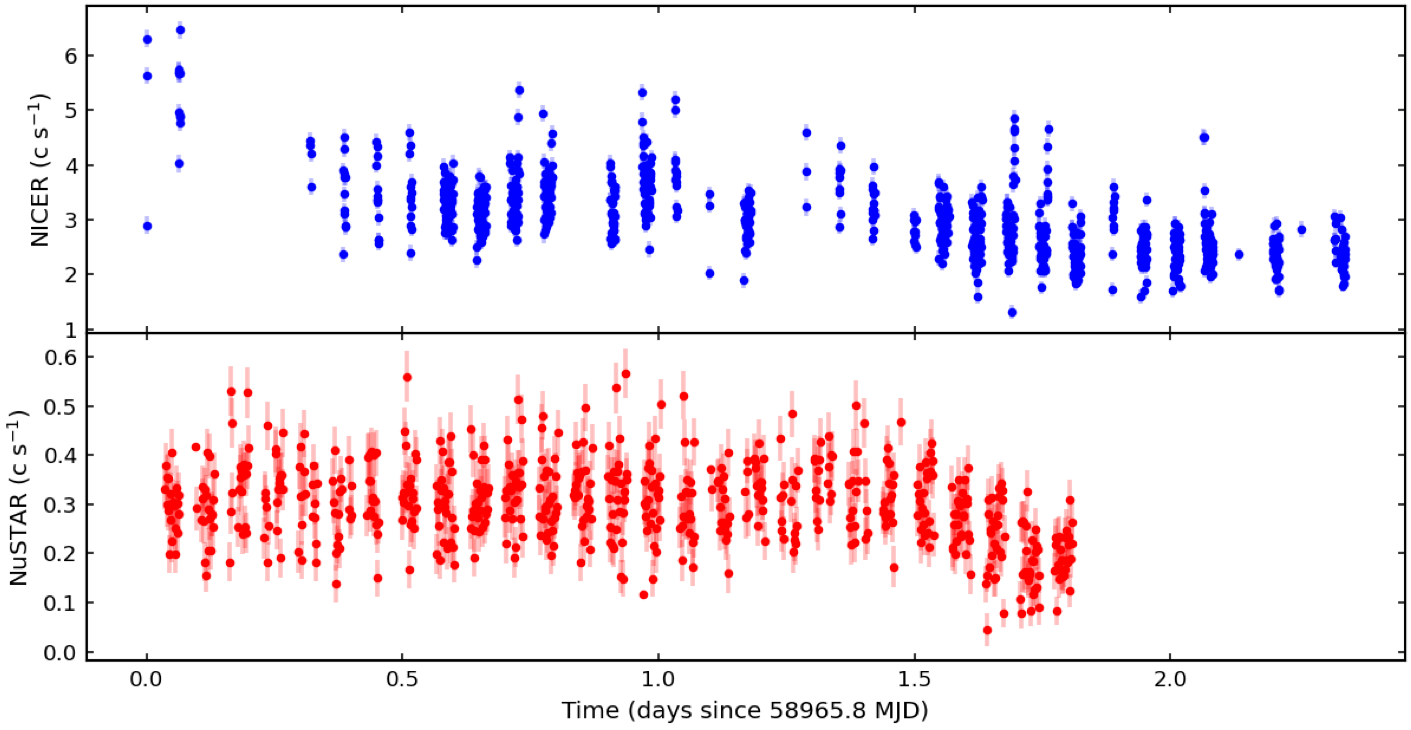NICER / ISS Science Nugget
for June 27, 2024
Mysteriluminous
The term "ultraluminous X-ray source" (ULX) is used to describe a class of mysterious objects that appear to outshine standard expectations for how much radiation can be emitted when a compact object (e.g., neutron star or black hole) accretes matter: the "Eddington limit" occurs when the pressure of the infalling gas is balanced by the momentum carried by the outgoing photons, presumably preventing any accretion at higher mass-transfer rates. Complications, beyond the simple scenario of spherical accretion, abound - beamed emission, such as in a jet, can violate the Eddington limit, for example. Nevertheless, the apparently high intrinsic luminosity of ULXs has drawn considerable attention and the desire to better understand the central engine (or perhaps different engines in different objects) powering these energetic sources. Proposed candidates have included black holes with masses hundreds to thousands of times the mass of our Sun, stellar-mass black holes with emission beamed preferentially in our direction, and compact objects somehow sustaining accretion at rates above the Eddington limit. In the last decade, the discovery of regular X-ray pulsations from a handful of ULXs marked a watershed in their study, demonstrating that at least some ULXs are accreting neutron stars.
There is no clear example of a ULX in our own Milky Way. They appear in small numbers in other galaxies, typically one or a few outshining other X-ray sources in a given galaxy. Among the nearest is the single ULX known in the galaxy NGC 4190, poorly studied until NICER and NASA's NuSTAR telescope carried out a series of simultaneous observations in April 2020. Two teams - H. Earnshaw (Caltech) et al. and J. Combi (Univ. Nacional de la Plata, Argentina) et al. -- independently analyzed these data and recently published their peer-reviewed results in The Astrophysical Journal and the European journal Astronomy & Astrophysics.
Neither group finds evidence for pulsations, with the NICER data providing a fairly restrictive upper limit of 7% of the total X-ray emission being possibly pulsed; this does not necessarily rule out a neutron star scenario, as it may be the result of a pulsar's "lighthouse beam" simply pointing away from our line of sight. In analyzing the joint NICER-NuSTAR spectroscopic measurements, the two groups find consistent results - namely that we are likely viewing the accreting binary system's orbital plane nearly face-on, and looking down into a hot accretion flow close to the compact object through a surrounding "funnel" of cooler material - but arrive at somewhat different interpretations. Combi et al. suggest that the accreting object is a roughly 10 solar-mass black hole, while Earnshaw et al. find evidence in the high-energy spectral behavior of a likely accretion column - a structure formed when the flow is channeled by a neutron star's magnetic field. Further elucidation of the nature of NGC 4190 ULX-1, and other ULX sources, will require additional observations.


Left: Joint observations of ULX-1 in the galaxy NGC 4190, with NICER (top panel) and NuSTAR (bottom). Detected X-ray counts per second, in bins of 30-sec and 200-sec duration (NICER and NuSTAR, respectively), are shown for a 2-day campaign beginning at 19:11 UT on April 26, 2020. (Credit: Combi et al. 2024) Right: NICER (black points) and NuSTAR (blue and purple points) X-ray spectra for NGC 4190 ULX-1 complement one another in photon energy coverage. A best-fit spectral model (solid curves), the sum of thermal and non-thermal emission components (dotted curves), produces residuals (lower panel) consistent with zero, yielding clues to the nature of the mysterious source. (Credit: Earnshaw et al. 2024)
<< Previous
Main Index
Next >>